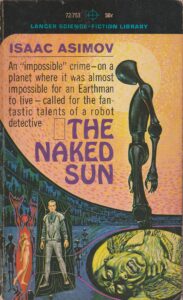
Arbeidsverditeori en gang til

Nå fra arabisk historisk synsvinkel.
Jeg leser Ibn Khaldun som skrev på 1300-tallet. En flott norsk oversettelse av Al-Muqaddimah, Introduksjon til verdenshistorien (1377) – på Pax forlag i to bind.
Khaldun var kanskje den største vitenskapsmannen i den arabiske verden. Han skrev på mange måter i grenselandet mellom den tradisjonelle verden, og den (kommende) moderne verden. Deler av teksten kan minne om Machiavelli’s Fyrsten, skrevet i samme periode.
Jeg vet ikke om Karl Marx kjente til denne kilden – jeg har lest mye Marx, men kan ikke huske referanse til Khaldun. Marx var rask til å erklære andre for å ha en for primitiv ide om politisk økonomi. Om han ville gjort det i dette tilfellet vet jeg ikke. Ut fra debatt på nett ser det ikke ut til at han kjente til Khaldun, selv om arbeidverditeorien har store likheter .
Khalduns utgangspunkt er 600 års erfaring med islamske dynastier. De vokser fram, har makt, men blir overtatt av andre. Han beskriver årsaker til dette.
Politisk økonomi – som Marx kalte det – er i utgangspunktet «politisk» eller «sosialt», for Khaldun. Han er ingen «økonomist». Når dynastier går under, er det ut fra en kombinasjon av sosiale og økonomiske årsaker.
Hans konseptualisering av sosial klasse er en viktig del av dette. Den er kanskje hva Marx ville kalt førkapitalistisk. Men i den arabiske verden ble den utviklet til å bli tidlig-kapitalistisk.
Hovedsaken her, er at arbeidsfolket og de underordnede allierer seg med klassen over dem i et bytteforhold. Men det er ikke «rent» marked – vare mot vare. I stedet er det arbeid mot beskyttelse. Arbeidsfolket bidrar med arbeid, som vare – den overordnete klassen bidrar med sosial kontroll. Lønn for arbeidet er bare en del av det større bildet – beskyttelse.
Marx ville kanskje innvendt at dette med avhengighet og beskyttelse jo var velkjent fra europeisk føydalisme, så hva var nytt? Kanskje bare litt nytt, den gang da. Men mer etter hvert. Eller, mer som var annerledes, i forhold til den framvoksende kapitalismen i vesten.
Ut fra en «ensporet» tolkning av vestlig kapitalisme fra 1500 og utover, burde den arabiske «proto-kapitalismen» på 1300-tallet ha dødd ut for lenge siden. Det skjedde ikke. Hvorfor ikke?
Novelprisvinner A Gurnah gir et skjønnlitterært bilde av hvorfor ikke – og hvordan arabisk handelskapitalisme spredde seg utover fra 1500-tallet og senere. Arabiske handelsmenn bygget på eksisterende status og avhengighetsforhold, og lyktes over lang tid i å utnytte merarbeid fra afrikanerne. Europeerne var mer innstilt på å skyte ned fienden, og mislyktes.
Vestens stort sett mislykte forsøk på å endre situasjonen i den arabiske verden skyldes ikke bare griskhet, egenmektighet, osv, men også manglende forståelse for virkemåten i disse samfunnene. Ibn Khaldun er fortsatt en god læremester.
Marx gjorde et stort poeng av at han plasserte verdien av arbeidskraften i sentrum, snarere enn verdien av arbeidet, som de flest gjorde før ham (kanskje i h0vedsak inkludert Khaldun). Altså arbeidet s0m prosess, til forskjell fra arbeidets resultat.
Marx’ syn var kanskje riktig, i forhold til et mer utviklet kapitalistisk system, som han beskrev. Men når forholdet mellom arbeidstaker og arbeidsgiver / kjøper er styrt av andre institusjoner enn marked og kapital, for eksempel, ære og anseelse i slekt og familie, er det andre regler som gjelder. Som vist bl.a. av antropologisk forskning (f eks Fredrik Barth). Det er mye variasjon mellom samfunn, men også mulig å gjenkjenne en sentral økonomisk logikk. I min doktorgradsavhandling beskrevet jeg hvordan den blir påvirket av tre hovedtyper av distribusjon – varer, gaver, og fordelte goder. Jfr. http://ogholter.no/wp-content/uploads/2013/03/GPC-thesis-part-1.docx
Hva enten det er verdien av arbeidet, eller av arbeidskraften, er Khaldoun 100 prosent klar på at arbeid er avgjørende for verdiskaping.
Han beskriver grunnene til at ulike dynastier vokser fram men mislykkes over tid. Han bruker «status» som uavhengig variabel, mye mer enn moderne forskere. Et dynasti innnfører en rangordning med ulik status. Etter hvert, over tid, oppstår problemer, dels i herskergruppen, dels utenfor.
Et hovedpoeng hos Khaldun er at økt status bety mer rikdom fra andres arbeid. I så måte er modellen pre-kapitalistisk. Personer med høy status får flere til å jobbe for dem, og får nytte av arbeidet. Høy status er ikke bare et spørsmål om rang men også om økonomi.
Referanse
https://www.pax.no/al-muqaddimah.5602265-331604.html

My ‘home page’ is now mainly historical and needs an update. Changes coming.
For my recent research, check the data base Cristin, with 26 entries in 2022. 19 of these are texts from the revised, updated and expanded book on gender equality in academia. This English language version is better than the Norwegian (2021) version. You find it here:
https://press.nordicopenaccess.no/index.php/noasp/catalog/book/179

Is academia now gender-equal? Are there equal chances? No, according to this new in-depth study.
Even in a quite gender-equal country like Norway, we are not there yet.
Meritocracy is flawed. Selections are skewed. Stereotypes are still active.
How – and why – does this happen?
This book provides new evidence and ways to think about the problems – as well as advice on how to improve the situation.
https://press.nordicopenaccess.no/index.php/noasp/catalog/book/179

Det siste året har en gruppe forskere arbeidet med å oppdatere, tilrettelegge og oversette den norske studien Likestilling i akademia, for et internasjonalt publikum. Her er resultatet: https://press.nordicopenaccess.no/index.php/noasp/catalog/book/179

Kvinnepolitiske nøkkeltekster – Kapitalen som kjønnspolitisk tekst (1991)
Hvorfor ble marxistisk teori og praksis så mannsorientert – og mannsdominert? Selv om Marx og Engels erklærte seg som tilhengere av ‘kvinnesaken’?
Det spør jeg om, og gir noen svar på, i denne lille artikkelen fra 1991: «Kvinnepolitiske nøkkeltekster – Kapitalen som kjønnspolitisk tekst».
Jeg har ikke sett artikkelen siden dengang da, men fant den da jeg nylig ryddet kontoret mitt på STK. Det var tidsskriftet Nytt om kvinneforskning som ga den status som «kvinnepolitisk nøkkeltekst», men hvor mye nøkkel den ble, vet jeg ikke. Den er ukjent for de fleste tror jeg.
Les den her: Holter Kapitalen som kjønnspolitisk tekst 1991
I denne teksten er det ikke lenger «kjønn» som dras inn i laboratoriet for marxistisk analyse, slik det hadde vært i mange av mine tidligere tekster. Her er det er omvendt. «The tables are turned». Jeg tar i stedet med marxismen inn på kontoret til dr Freud, med farsfigurer, macho-atferd og det hele. Iallfall til venteværelset hans! Jeg tolker Marx’s teori ut fra sosialpsykologi og feministisk teori.
To ting gjør at jeg tenker at artikkelen er verd en (gjen-)lesning. For det første er den prinsippiell og tar opp hovedsaker i en stor marxisme-feminisme debatt. For det andre visste jeg hva jeg skrev om, når det gjalt Marx. Jeg hadde jobbet i mange år med å lese og tolke hans beste skrifter, bl.a. Grundrisse og Kapitalen. Jeg hadde Marx og Engels Collected works i hylla. Så artikkelen har en god del dybde, selv om den er kortfattet. Kjernen i dette var at jeg hadde kommet fram til at Marx’s økonomiske modell var mannsorientert, selv om den ikke sa dette åpent. Han antydet at kvinners arbeid og reproduksjonsarbeidet bl.a. i husholdet var sentralt viktig for «totalkapitalen» i samfunnet, altså noe helt annet enn f.eks. Lenins tanke om at dette bare handlet om tilbakeliggende «husslaveri». Men Marx utviklet aldri dette. Hadde han gjort det, kunne situasjonen senere ha vært annerledes. Mannsdominans på venstresiden gjorde at dette heller ikke ble utfordret på høyresiden.
Marxismen som oppsto i annen halvdel av 1800-tallet skulle være den «vitenskapelige» versjonen av frigjøring i det moderne samfunnet, inkludert frigjøring av kvinnene. På 1900-tallet ble den i stedet i høy grad en affære mellom menn, som kvinner til en viss grad kunne være med på – når det passet de mektige mennene. Jeg hadde beskrevet dette tidligere, bl. a. den empiriske utviklingen i Soviet i 1984-artikkelen «Sosialismens herredømme – kvinner og menn i Sovjetøkonomien», Materialisten 4 / 1984, 41-62, som kan leses ved siden av denne.
Den kortvarige feiring av fri seksualitet og flytende kjønn etter revolusjonen i Russland blir gjerne omtalt som utopisk og urealistisk. Hva om man hadde gått inn for saken? Ville det gitt kortvarige tilbakeslag i Europa den gang? Utvilsom ja. Men på sikt? Det som skjedde, med Stalin, var at et ørlite “pusterom” for frihet, ble kneblet.
Debatten om kjønn i dag vitner om at temaet ikke er “marginalt” i forhold til politikk og økonomi. Det er helt sentral. Dette har blitt tydelig de siste ti årene, med stadig flere “sterke menn” som statsledere, verden over, som innfører innskrenking av abort, begrensning av fritt samliv ut fra egen seksualitet, osv, som sentralt for sin politikk. Hvorfor gjør de det? Kanskje fordi de vil gjenopprette “den mannlige forsørgerkontrakten” men et tilhørende scenario av “trygge familieverdier”. Fordi de kan bygge på eksisterende stor kjønnsdifferensiering i arbeidslivet. I tråd med – tilmed – Marx.

Boka Likestilling i akademia – fra kunnskap til endring ble publisert av Cappelen-Damm, november 2021.
Den er åpent tilgjengelig (open access) her: https://www.cappelendammundervisning.no/_likestilling-i-akademia–fra-kunnskap-til-endring-9788202669669
Boka bygger på en ny og bred kartlegging av forholdene i akademia, med fokus på natur- og realfag. Problemstillingen handler om kjønnsbalanse. Hvorfor øker kjønnsbalansen på lavere nivå, mens menn dominerer på høyere nivå? Det er vanskelig å skape kjønnsbalanse på toppnivå, selv for et universitet som jobber for økt balanse og likestilling. Hva kan det komme av?
Boka går i dybden på denne problemstillingen, gjennom tre deler:
Del 1 – empiri – der vi viser det store “kjønnsgapet” i akademia, som gjør at menn dominerer, på toppnivå
Del 2 – modeller og teori – der vi analyserer årsakene til dette
Del 3 – tiltak – hva kan gjøres – erfaringer fra likestillingstiltak
Boka kan også bestilles i papirkopi, fra forlaget. Vi opplever allerede stor etterspørsel.
Boka er på ingen måte en “fasit” eller “explain all” i forhold til mannsdominans på toppnivå i akademia – eller i andre deler av det norske samfunnet. Men den er en dybdestudie med mye ny empiri, og nye forklaringsmåter.
Mitt håp er at boka kan bidra til å få “likestillingslandet Norge” til å bli ikke bare være en proklamasjon – men en realitet.
Vi analyserer hvor skoen trykker, og hva som kan gjøres.
Her er et bilde fra lanseringen av boka på Bristol i Oslo 8. november 2021.
Fra venstre, professor Lena Tallaksen fra MN-fakultetet, min medredaktør Lottta Snickare, meg, og Aud Tønneson (dekan TF / UiO).

New book
Gender Equality in Academia – a revised English version of the 2021 Norwegian edition (Likestilling i akademia – fra kunnskap til endring) is on its way, to be published as an open access publication (by Cappelen-Damm) in November/December.

I am re-reading Asimov’s Foundation trilogy. As a fantasy of a totally «objective» science. A «psychohistorical» science, founded on human crowd behaviour, able to forecast the future. Down to the last decimals.
What you need, in this perspective, is a better mathematical solution, to different probabilities of human behavior.
Asimov’s trilogy would probably have been mainly forgotten, now, if it wasn’t for the fact that he also questioned this kind of thinking.
The trilogy is an excersize in «extreme objectivism» plus critique.
The problem is – how to avoid civilization breakdown.
Asimov first outlines a «first foundation», an engineering and natural sciences type of forecast, to avoid the breakdown of a large galactic empire. Then he proposes a «second foundation», relying more on psychologists and sociologists. His third option, a kind of masterstroke, is to combine the two and hide it so well that neither the empire nor its opponents know about it. Together, these will be able to restore civilization. There is a solution. But it is secret.
Asimov wrote in the 50ies. He had never read J. G. Ballard, Philip K Dick, or Ursula LeGuin – the «inner space» critical turn of science fiction in the 60ies and 70ies. along with feminist awakening. Or Foucault, and others, later. Asimov often often wrote like a conservative engineer, and his gender role portraits, in the Foundation triology, are often funny “pastiche” from the US in the 50ies.
What is remarkable is that his texts can be read, in more modern and postmodern light, later on. For example, Asimov had not read Judith Buttler’s gender as performance theory. But this element is present in his texts. The actors “perform”, and this has consequences for events, including the structural study of psychohistory.
At each step, in the Foundation trilogy, Asimov brings his objectivist science plan further. Yet he also stamps on his own feet. The plan doesn’t quite work out. This is what makes the trilogy entertaining – and challenging, today also. Psychohistory is challenged especially as a human known as the Mule appears, leading revolts against the empire, and taking over the empire. The Mule is a ‘deviant’ not foreseen by the calculations of psychohistory.

What an amazing author and scientist Isaac Asimov was. I have re-read his book The naked sun, a science fiction novel written in 1956.
In this short book, 191 pages, Asimov manages to combine 1) a detective story, 2) an exploration of artificial intelligence and human interaction («the laws of robotics»), and (3) a portrait of a postpandemic/postcrisis society where human contact is looked at with fear. This last aspect has gone unnoticed.
In this society, you can «view» someone, by means of technology, from afar – but «seeing» them, directly, is a horror, or as if we would expose genitals to each other. Seeing people in real life is restricted to very close contacts and special situations. People have become hermits, each in their own castle. This society is located on the fertile planet Solaria, colonized by emigrants from Earth long ago, having developed into a «hygienic» land owner world. The citizens are few, compared to the area of the planet, so each citizen has a huge estate, and lives from this «estate economy», by means of robots doing the work – 30 000 robots per citizen, we are told (no problem with Asimov’s imagination).
Here, each in their huge estate, they rule as local kings and queens (both are portrayed). Presumably without much social class divide (at least, this plays no role in the book).
So, if we imagine that the current pandemic is not the last, and that humanity will have to adapt – here is one interesting but also quite sad telling of the future story, leading to personal isolation plus technology or robot work. However, Asimov does not leave us depressed.
Here is the attempt, at the back, to summarize the book.
Yet Asimov also introduces a theme 4) already in the title of the book: The naked sun. The main person, the detective growing up on Earth, has a fear of open spaces, and of seeing the naked sun, or the sky. At the end of the book he overcomes his fear. The extreme isolation of the castle-citizens of Solaria, and the anxiety of the tunnel-living people from Earth, can be overcome. The author has a trick up his sleeve. I think this qualifies to «the very best indeed». What a mind, and author.
Even if Asimov is sometimes classified as a tech oriented writer and a natural sciences type of researcher /author, there is no doubt whatsoever, in this book, that cultural and social constructions play a large role, including social roles and social psychology, that are very clearly displayed in the text. These cross-disciplinary areas are exactly where Asimov excels – in my view. The “robots, mainly” view of Asimov is far too narrow.
Although Asimov was still a fairly young man (36 years) when The naked sun was written, he had already tasted success, especially through The Foundation trilogy, and he writes with confidence, although very economically, this was still a novel that should appeal to the action-seeking book reader and not go too far in depth. Kiosk literature, but clearly punching way beyond its class.
The Naked Sun was the third volume in his “robot series” starting with I, robot, a few years before. The cover below illustrates the need to get attention, at the time. Especially for this new “controversial” science fiction litterature.
This how this somewhat controversial book was presented at the back cover:
Why could Asimov be so “assertive” and clear in his plot, in The naked sun? It was not only due to the two former volumes in the “Robot” series. It was mainly that the Foundation trilogy had now started to gain well-deserved attention.
The Foundation trilogy, written a few years before, makes the same basic points as The naked sun.
The Foundation trilogy is wider and much more epic than the robot series. Much like Star Wars, later.This is how it was presented, in my slightly later UK edition (1967).
In Foundation, volume one, we have, first, a galactic civilization that faces breakdown – yet some of it manages to survive, as an outpost in the galaxy, mainly for technology reasons.
Next, this “first foundation” renaissance civilization manages to overcome regional barbaric forces, and expand, but is then faced by a “human mutant”, overturning all expectations.
Finally, in the third volume, Asimov leads the way towards a more mysterious “second foundation”, which is socially and psychologically oriented, more than technically. Only through the combination of the two foundations is civilization regained.
It is written somewhat “naively”, using the words and conceptions of its time, but it still gives food for thought. I have never understood why it did not become a film or series, since the plot and background arguments are in many ways better than Star Wars, not to speak of Game of Thrones, et al.
PS – There is now a “teaser” for a new Foundation series, from Apple TV. Great – but so far I am not so impressed. The trick of the tail, in this story, is the sociological overview, not the dramatis personae. But we’ll see.

One of the reasons why the 1960s can be classified as “optimistic” was that they had a clear topic in mind – “consumer society”, and what to do about it. Change seemed possible. Later, the topic turned into “capitalism”. This short essay tells why this was not a good idea.
Consumer society – back to the 60s future?
I read science fiction novels from the 1960s since I love their optimistic vision off the future, before all the bleakness and depression set in. Like I love the best music from that period. I listen to music referencing and critically reflecting the optimistic period, later, like A perfect circle: Motive (LP cover extract above).
Back then, from 1964-65 onwards, western culture was influenced by what was known as the youth revolt, commonly displayed by long-haired boys that challenged conventional gender norms by “looking like girls”. The youth revolt evolving into the counter culture had one main target, or obstacle – not yet defined fully as “enemy” – namely, consumer society. Later, by 1969, due to the repression of the youth revolt, a new image became dominant – there was an enemy, and its name was capitalism. Or the establishment. At the time, this was seen as a more “advanced” and mature analysis of society – the flower children finally growing up.
Was it – really? It is consumer society, not capitalism as such, that has contributed most to the current climate crisis. Doing away with capitalism has not lead to better climate performance (sometimes, the opposite, e g in the Soviet Union). The same production-consumption oriented economy has ruled society, regardless of political color and formal positions of power-holders. The “vague” and “fuzzy” consumer society analysis actually has grown less old, than the supposedly improved capitalism versions.
Back in the 1960s, as a young reader, I absorbed Aldous Huxley’s Brave new world, where citizens are indoctrinated into consuming, as well as novels by Philip K Dick and others detailing the problems of consumer society. Here is one of several 60ies novels where the traditional male role in consumer society was challenged:
Today, I think consumer society oriented analysis has stood the test of time better than most capitalism analyses. Although they may be combined, and consumer society analysis is somewhat blind unless it also has a map of core capital formations and political and economic processes. Its main point, to me, is that it includes all and any in the diagnoses. It does not creep down to the level of “us” versus “them”. Like working class and capitalists. Or one ethnic group against other groups.
Consumer society analysis basically says, this is complex, we are all into it, one or the other, in different roles and positions. Research may find “classes” of consumer pushers, dealers, strong and less strong consumer adherence / addiction, and so on, but this is clearly a varied landscape, not like a class division. And what is more, it is clearly related or broadly relational, meaning that the choices of one individual are clearly influenced by those of others. It is partly collective and partly individual behavior. It is partly economic but cultural, social and psychological (etc) also – clearly interdisciplinary.
Consumer society theory, appearing from the 1950s onwards, was tuned to the economic, social and cultural contribution of the individual, including the possibility of change on that level – not just the positioning between classes within the consumption cycle. Later research on life forms, work and family, and similar topics confirmed the perspective. Briefly put, consumer society is not just an ordering of society, but also of ways of life. The role of the male breadwinner has been one primary social “driver” behind the system, although women contribute too.
Marx, already, recognized that capitalism affects this syndrome at various levels – in more or less “civil” forms – where “relative” surplus value, developing from more “absolute” value forms, could emerge. Relative surplus value production became tuned to the superior position of the male breadwinner – even though it was actually women (and children), not men, who were the main workers in the early capitalist industry that Marx witnessed. Capitalism “absorbed” and “redirected” earlier societal gender arrangements, and added discrimination forms on its own. Women were the first main workers in the early industrial revolution, later replaced by men. When the “Russian proletariat” stood up in favour of the Russian revolution, e g in Petersburg, a majority of factory workers were still women – not men. It was only gradually that “industry” became a male bastion, and”consumption” a female affair, in the development of consumer society – with the US as leading force in the 20th century.










